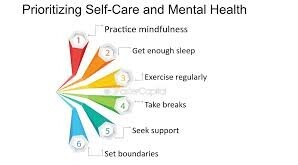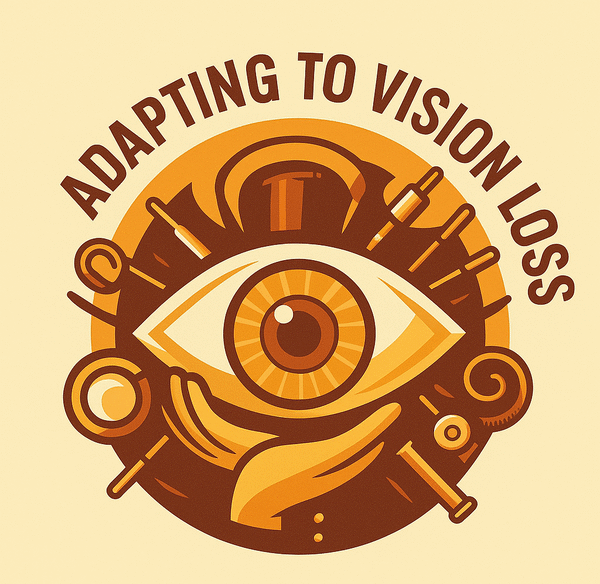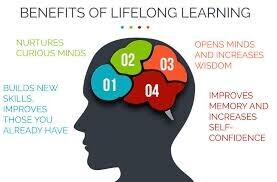 Emotional well-being is the cornerstone of a fulfilling life—especially when adapting to significant changes like vision loss. I discovered that nurturing your emotional health isn’t just about managing stress; it’s about embracing a journey of self-discovery, resilience, and growth. In this article, I share my personal experiences and practical strategies for prioritizing emotional well-being, complemented by actionable tips, expanded bullet points, and valuable resources.
Emotional well-being is the cornerstone of a fulfilling life—especially when adapting to significant changes like vision loss. I discovered that nurturing your emotional health isn’t just about managing stress; it’s about embracing a journey of self-discovery, resilience, and growth. In this article, I share my personal experiences and practical strategies for prioritizing emotional well-being, complemented by actionable tips, expanded bullet points, and valuable resources.
Reimagining Emotional Health
When I first began to focus on my emotional well-being, I realized that it required a shift in perspective. Instead of seeing emotional challenges as obstacles, I learned to view them as opportunities for self-improvement and deeper understanding. This reimagining helped me establish a foundation for lasting inner strength.
- Understanding Your Emotions:
Recognizing and naming your feelings is the first step toward healing. I found that keeping a daily journal allowed me to track my moods and identify patterns. This practice not only made my emotions more manageable but also provided clarity on the triggers of stress or anxiety. For additional guidance, you might explore the Greater Good Science Center for insights on emotional intelligence. - Embracing Vulnerability:
Opening up about your struggles is not a sign of weakness but a pathway to connection and growth. Sharing experiences with trusted friends or a support group can create a safe space where you feel heard and validated. Resources like NAMI offer support and information for those navigating emotional challenges.
Managing Stress and Anxiety
Stress and anxiety can be overwhelming, but I learned that they can be managed with deliberate practices and strategies that promote relaxation and balance.
- Mindfulness and Meditation:
Daily mindfulness practices have been a game changer for me. I set aside a few minutes each day to meditate, which helps center my thoughts and reduce anxiety. Techniques such as deep breathing or guided meditation sessions—many of which are available through apps like Headspace or Calm—offer structured approaches to stress relief. - Physical Activity:
Regular exercise is not only beneficial for physical health but also vital for emotional balance. Whether it’s a brisk walk or a gentle yoga session, physical activity releases endorphins that naturally uplift your mood. The American Heart Association provides excellent resources on how to integrate exercise into your daily routine. - Creative Expression:
Expressing yourself creatively, whether through art, music, or writing, has helped me process my emotions and channel my feelings constructively. Creative outlets can act as a form of therapy, offering a release for pent-up emotions and fostering a sense of accomplishment. For inspiration, check out Art Therapy Resources.
Building a Support Network
No one should face emotional challenges alone. I found that a robust support network made all the difference in my journey toward emotional well-being.
- Professional Counseling:
Engaging with a therapist provided me with the tools to better understand and manage my emotions. Professional guidance helped me reframe negative thoughts and develop healthier coping strategies. Websites like Psychology Today allow you to find local therapists specializing in mental health. - Support Groups and Peer Connections:
Sharing experiences with others who face similar challenges can be incredibly validating. I joined local and online support groups where I could exchange tips and provide mutual encouragement. The Depression and Bipolar Support Alliance is one such resource that connects individuals in supportive communities. - Family and Friends:
Maintaining open communication with loved ones has been vital. Regularly spending time with family and friends not only lifts your spirits but also reinforces that you are not alone in your journey.
Practical Strategies for Emotional Well-Being
Integrating emotional self-care into daily life is a gradual process, and these strategies helped me make sustainable changes:
- Routine Self-Care Practices:
I set aside dedicated time each day for activities that nurture my mind and spirit. Whether it’s reading, listening to music, or taking a quiet moment for reflection, these routines have become non-negotiable parts of my day. - Setting Realistic Expectations:
Understanding that it’s okay not to feel okay all the time is crucial. I learned to set realistic goals for myself, celebrating small victories rather than striving for perfection. For further reading on setting realistic expectations and self-compassion, the Mindful Self-Compassion website offers valuable resources. - Developing Healthy Boundaries:
Recognizing and respecting my limits has been essential. I started saying no to activities that drained me and prioritizing tasks that aligned with my well-being. This boundary-setting helped reduce stress and preserve my energy for things that truly mattered.
Personal Reflections and Lessons Learned
My journey to prioritize emotional well-being has been filled with ups and downs, but each experience has taught me valuable lessons. Every time I manage to navigate a stressful situation or simply take a moment to appreciate the present, I am reminded that emotional health is a continuous, evolving process. Celebrating even the smallest improvements has reinforced my belief that caring for my emotional well-being is an act of strength and self-love.
Conclusion
Prioritizing emotional well-being is not a destination but a continuous journey of growth, self-awareness, and resilience. By understanding your emotions, managing stress through mindfulness and physical activity, and building a supportive network, you can nurture a more balanced and fulfilling life. Each step you take—from keeping a journal to setting healthy boundaries—is a powerful investment in your inner strength. Embrace these strategies, explore the resources available, and let your journey toward emotional well-being inspire a future defined by resilience and self-compassion.

